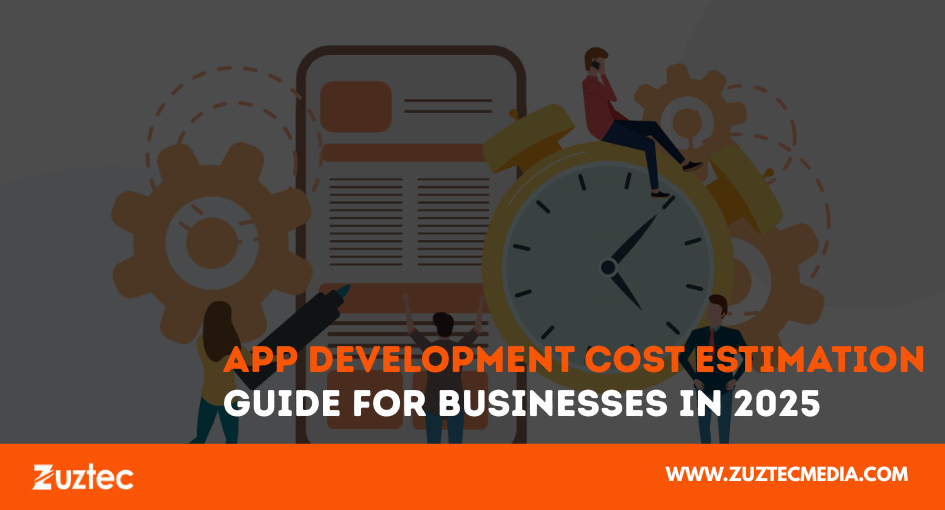
App Development Cost Estimation Guide For Businesses In 2025
Creating a mobile or web application is a significant investment for businesses of all sizes. Whether you’re a startup launching your first product or an enterprise improving your digital services, knowing how much the project will cost is essential. However, app development cost estimation isn’t always simple. It depends on various factors such as app type, complexity, team structure, and development approach.
Most companies begin the development process with a budget in mind. But without accurate planning, they often face unexpected expenses. This can lead to delays, incomplete features, or worse, entire project failures. Estimating the cost of app development helps stakeholders understand what resources are needed and how to allocate them effectively.
A well-researched estimate is more than just a number; it sets expectations and helps guide technical decisions. For example, deciding between native and cross-platform development can affect the budget significantly. Similarly, outsourcing development may be more cost-effective than hiring an in-house team, depending on the project’s scope and timeline.
In this article, we’ll explain how application development cost estimation works, what affects the final cost, and how to keep your budget under control. Understanding these elements can prevent financial surprises and ensure a smoother development journey. With more clarity around costs, you can make smarter decisions and get your app to market faster with better results.
Factors That Influence App Development Cost Estimation
When estimating app development cost, several variables play a role. Each decision made during planning and development will impact the final budget. The type of app is the starting point—whether it’s a simple utility app, a complex enterprise tool, or a game, the features and functionality required will differ significantly.
App complexity is another major cost factor. A basic app with minimal screens and static content may cost much less than one with real-time chat, user accounts, GPS tracking, and third-party integrations.
Design also affects the budget. A custom-designed UI and UX experience will require more hours and expertise than using a pre-made template. Additionally, the number of platforms—iOS, Android, web, or all—adds to the cost. Native apps for each platform take longer to build than using cross-platform solutions like Flutter or React Native.
Team structure also matters. Hiring a freelancer may be cheaper upfront, but working with an experienced agency or in-house team can provide better long-term value, quality, and support. Location is another consideration—development rates vary dramatically between countries.
Stages That Impact Time And Budget Allocation
The entire app development process includes multiple stages, each with associated costs. Planning and research are the first phase, where the scope, audience, and goals are defined. While it might seem optional, skipping this step can lead to vague requirements and increased costs later.
Next comes wireframing and design. Creating visual mockups, navigation flows, and user interactions takes time and effort, especially if the app requires unique branding or animations. This phase ensures the product looks and feels right before development begins.
Development is often the most expensive phase. In this stage, app development cost estimation depends on how much functionality needs to be built from scratch versus using existing tools or APIs. Adding advanced features like real-time syncing or offline support increases both time and cost.
Skipping this step might reduce short-term costs, but it can lead to bugs, crashes, and unhappy users post-launch, which are more expensive to fix.
How To Manage Budget And Control Hidden Expenses
While some expenses are fixed, others—like revisions or changes to requirements—can cause the total cost to rise quickly. To avoid surprises, keep communication clear between all parties, including developers, designers, and project managers.
It’s smart to allocate a buffer of 10% to 20% in your budget for unexpected changes. Projects rarely go exactly as planned, especially when new ideas emerge during development.
This approach focuses on launching only the core features first. You can then use user feedback to prioritize future updates. This saves both time and money, while still delivering a usable app.
Licensing fees for third-party tools, app store charges, and ongoing maintenance costs must also be considered. These aren’t always included in initial estimates, so it’s important to ask your development team for a full breakdown.
Conclusion: Planning For Accurate Application Development Cost Estimation
Accurate app development cost estimation allows businesses to set realistic goals, avoid budget overruns, and reduce risk. It’s a strategic step that should never be overlooked. By understanding the factors that influence costs—from complexity and features to design and team structure—companies can make informed choices from day one.
Unexpected costs often arise when key steps are skipped or underestimated. Whether you’re building a small app or a large-scale platform, proper planning, open communication, and clear documentation can make the entire process smoother and more cost-effective.
In conclusion, anyone considering an app should invest time in detailed application development cost estimation. Doing so leads to more predictable outcomes, higher quality results, and fewer financial surprises during and after launch.

